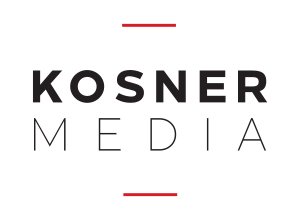John Kosner on Sports Podcasts with Sportico’s John Wall Street
Original Article: Sportico, by John Wall Street, December 16th, 2020
SPORTS PODCASTING GENERATES INVESTOR INTEREST WHILE TURNING TO MONETIZATION QUESTIONS
Yesterday, Axios reported that Blue Wire, a sports podcasting network, had raised $5 million in Series A funding (the company did not respond to a request for insight on the valuation). The investment round, led by Dot Capital (Bettor Capital, Side Door Ventures and Forty5 Ventures also participated), comes just 10 months after Blue Wire announced it had closed on $1.2 million in seed money (that round was also led by Dot Capital).
Over the last twelve months, venture capital has been steadily flowing into the sports audio ecosystem (see: Spotify’s $196 million acquisition of The Ringer). But “there is much more attention [being paid by investors to the sports podcasting space] than there are revenues [being] generated against it,” cautioned Kosner Media president John Kosner, who wondered how investors plan to achieve a return on their investments. “There’s too much supply and too few buyers. [The space] feels overcrowded at the moment and other than Spotify, there aren’t any real confirmed [acquirers].” In addition to Blue Wire, Barstool Sports, The Ringer, ESPN, The Athletic and Sports Illustrated are all producing sports podcasts.
Our Take: Blue Wire is working to become the go-to platform for athletes (A Touch More with Megan Rapinoe & Sue Bird), teams (the Baltimore Ravens’ Black in the NFL) and sports media talent with a following (Haley O’Shaughnessy, formerly of The Ringer) to host and monetize their audio content. Its network currently includes 140 topical and regional podcasts designed for the next generation of sports fans. “We’re making a bet that the future is individual shows about individual teams a few times a week, not three hours [each day] of some 60-year old radio buffoon yelling about stuff they don’t even know about,” said Blue Wire CEO Kevin Jones.
As someone who started his career in sports radio—a notoriously underfunded business—it’s exciting to see so much investor enthusiasm for “sports radio 2.0” (as Jones called sports podcasting). But Kosner suggested the current boom is less about the demand for hyper-local sports programming and more about the greater technological shift occurring.
“You have this explosion of audio content [including podcasts, books, news articles, apps like Clubhouse] all being driven by the mass adoption of Apple’s AirPods and smart speakers from the likes of Amazon, Google and Apple,” he said.
For perspective: In 2019, Apple generated more revenue in AirPod sales than Twitter and Snapchat took in, combined.
While historically there hasn’t been much money within the sports radio business (at least relative to other media channels), Kosner believes that has more to do with the medium “never really being viewed as a premium buy compared to TV and the internet” than a lack of advertiser interest in the listener demographics. “There could be money made in sports podcasting if a new personalized, targeted advertising [market] were to take hold,” he said (think: what Facebook and Google do for mobile ads).
But Bettor Capital founder (and former Barstool Sports head of strategy & corporate development) David VanEgmond “fundamentally disagrees” an ad marketplace is needed for podcasting businesses to achieve meaningful revenues. “If you listen to [Barstool’s Pardon My Take, which is among Apple’s top podcasts], there is not one programmatic ad read,” he said. “It’s all organic. It’s all integrated. It’s all about execution. If [a podcast] can deliver for sponsors and make advertising feel a part of content as opposed to a break, then there is a strong ability to monetize.”
It should be noted that the average Blue Wire podcast listener listens for 45 minutes at a time. “The completion ratio for podcasting is really impressive,” Jones said, “and brands are starting to recognize it.”
VanEgmond acknowledged that the balance of Kosner’s concerns about the industry were valid, but he remains excited about the long-term opportunity sports audio presents.
““Podcasting as a medium is seeing significant growth in advertising dollars. I believe advertising in and around sports will continue to increase. [Blue Wire] has the infrastructure in place to go from 140 podcasts to thousands of podcasts. When you add up the collective scale, this is a business that can generate material advertising revenue. The backdrop of monetization here is very good.””
Kosner acknowledged that if the company develops a strong network of local market team podcasts it would be “a logical acquisition target for somebody—no question.”
Given its focus on local and regionalized content, VanEgmond called sports betting a “huge opportunity” for Blue Wire and the balance of the sports podcast business. “[Blue Wire has] two very strong Detroit Lions podcasts,” he said. “So when the Michigan market opens for sports betting, to think they would be very valuable assets for [sports betting operators within the state] is probably right.” Remember, sports-talk radio and sports podcasts have proven to be effective channels to market a sports betting product, and operators are only going to be spending more money. Added VanEgmond: “FanDuel and Draftkings spent [in the range] of $200 million each in the second half of this year, and fierce competition is beginning with BetMGM and other competitors beginning to grow their spend substantially as more states turn on.”
Monetizing the podcast network via advertising may be the lowest hanging fruit, even if podcast advertising remains in its nascent stages. But Jones sees the greatest upside for the business as developing original series—the plan is to do 8 to 10 a year—and the prospect of turning the storytelling into feature films, as Wondery has done: “Our bet is people are going to read less and listen to stories more over the next decade, and we’re going to build some of the best ones.”
